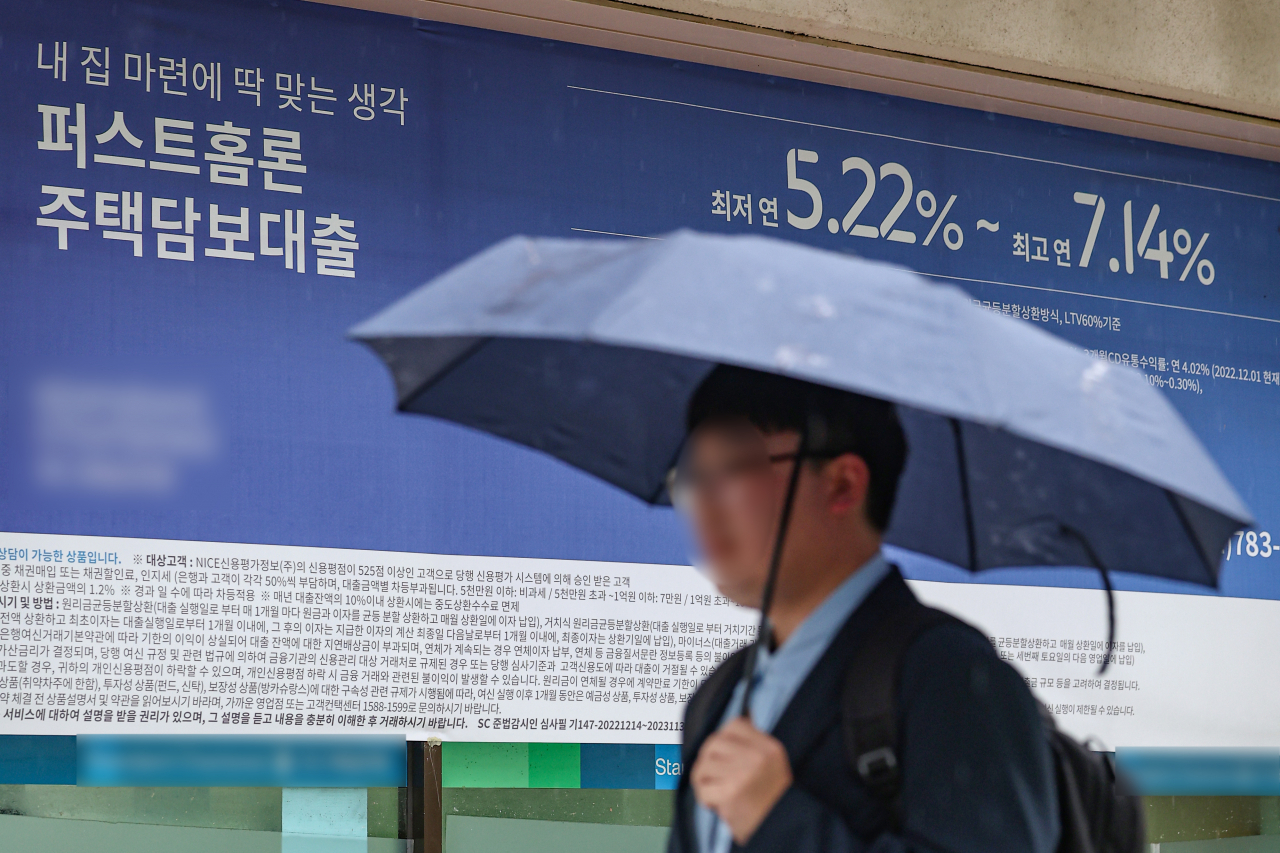
South Korea's household debt-to-gross domestic product ratio increased the most last year from 2017 among 26 nations that provided such data, despite financial authorities taking various measures to curb it.
According to the International Monetary Fund's Global Debt Database, the ratio reached 108.1 percent last year, an increase of 16.2 percentage points from 92 percent in 2017.
South Korea is the only country among the 26 countries included in the data set where private sector debt — consisting of household and corporate debt — has experienced double-digit growth in its household debt-to-GDP ratio over the last five years.
Other countries with increases in household debt-to-GDP ratios include Slovakia (9.1 percentage points), Japan (7.7 percentage points), Jordan (6 percentage points), Luxembourg (3.9 percentage points), Chile (2.8 percentage points), Switzerland (2.5 percentage points) and Germany (2.3 percentage points).
In contrast, countries like the US, Canada, the Netherlands, the UK, Austria, Denmark, Norway, Portugal, Greece, Ireland and Poland have seen a decrease in the share of household debt relative to GDP.
Not only is its growth rate the largest, South Korea's debt-to-GDP ratio also reached the second-highest level among the 26 countries last year, trailing only Switzerland, with a household debt-to-GDP ratio of 130.6 percent.
In 2017, South Korea ranked seventh among the countries.
"Financial authorities, financial institutions and the Bank of Korea agree on the cause of the recent increase in household debt: The housing market is recovering, leading to more mortgage loans,” said Kim Tae-hoon, head of the macrofinancial team at the Financial Services Commission, last month.
Since 2021, Korean financial authorities have been taking active measures to address the issue of rising household debt, such as regulating debt-to-service ratios and limiting the amount of household mortgages that lenders can provide.
However, the trend is ongoing.
According to a recent report released by the Bank of Korea in September, the ratio of household debt to GDP in the second quarter was 101.7 percent, up 0.2 percentage points from 101.5 percent in the first quarter. This is much higher than the average for other developed countries (73.4 percent) and emerging countries (48.4 percent).
Last month, the FSC also limited the debt service ratio calculation period for 50-year mortgage loans to 40 years, as it identified the loans as a major contributor to further increases in household debt.
Meanwhile, private companies' debt has also seen a significant increase, according to IMF data.
South Korea's nonfinancial corporate debt-to-GDP ratio increased from 147 percent in 2017 to 173.6 percent last year, marking a 26.6 percentage-point increase, second-largest after Luxembourg (38 percentage points).
Even the South Korean government faces a growing debt burden.
Last year, the government's debt-to-GDP ratio reached 54.3 percent, a 14.2 percentage point increase compared to 2017 when it was 40.1 percent. This increased amount is the 16th largest among 87 countries that are included in the IMF data.
Meanwhile, the absolute ratio is lower compared to major G7 countries like Japan (261.3 percent), Italy (144.4 percent), the US (121.4 percent), France (111.7 percent), Canada (106.6 percent), the UK (101.4 percent) and Germany (66.5 percent).



![[KH Explains] No more 'Michael' at Kakao Games](http://res.heraldm.com/phpwas/restmb_idxmake.php?idx=644&simg=/content/image/2024/04/28/20240428050183_0.jpg&u=20240428180321)



![[Grace Kao] Hybe vs. Ador: Inspiration, imitation and plagiarism](http://res.heraldm.com/phpwas/restmb_idxmake.php?idx=644&simg=/content/image/2024/04/28/20240428050220_0.jpg&u=)


![[Herald Interview] Mom’s Touch seeks to replicate success in Japan](http://res.heraldm.com/phpwas/restmb_idxmake.php?idx=644&simg=/content/image/2024/04/29/20240429050568_0.jpg&u=)








